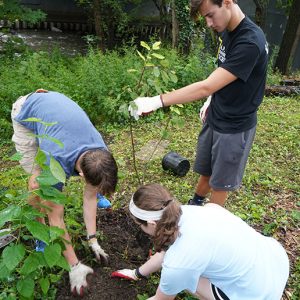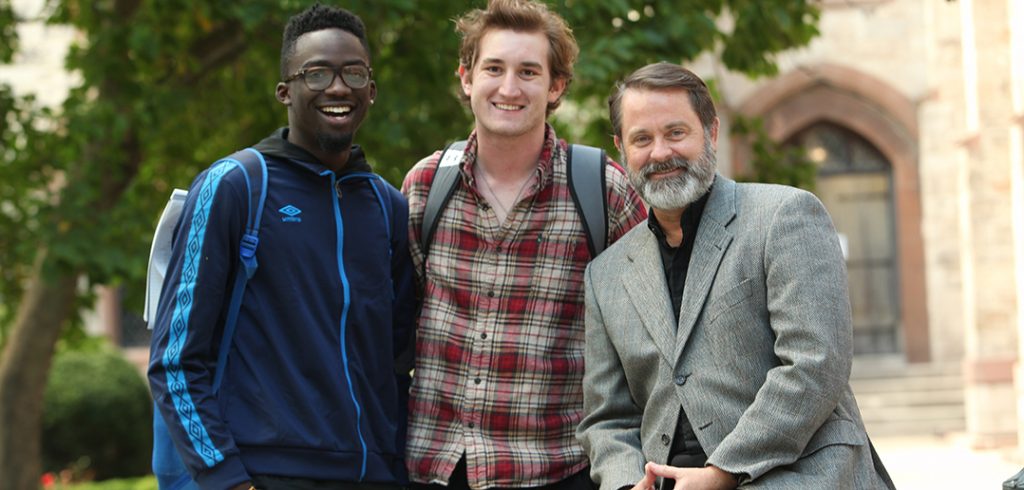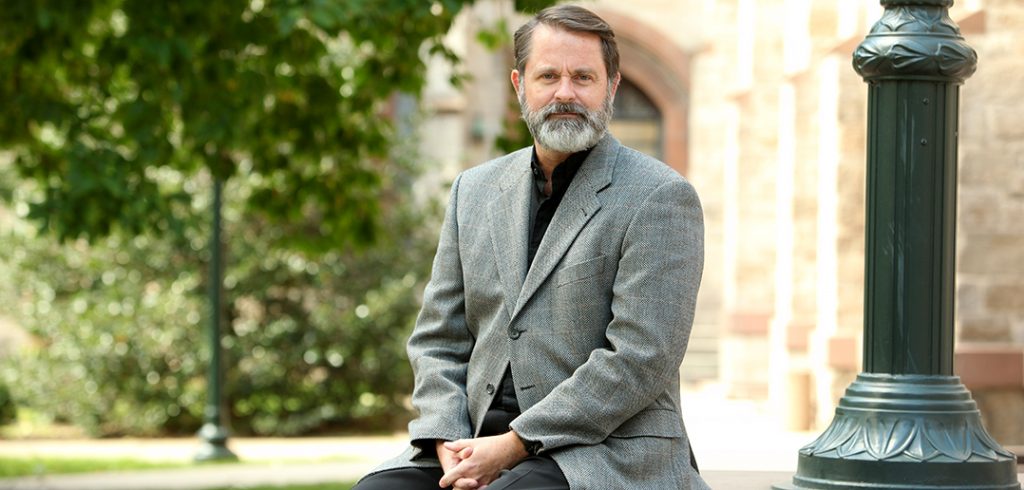Michael “Mick” McCarthy, S.J., vice president for Mission Integration and Planning, has served at several institutions of higher learning throughout his career. Based on his experience, he said, every university, like every human being, must regularly decide who it is and who it will become.
His arrival at Fordham in 2016 came with a host of changes, most of which were focused on Fordham’s current and future identity. Most notably, changes began with the name of his division, which was renamed from Mission and Ministry to Mission Integration and Planning.

“The term mission and ministry can suggest that for people to be engaged in the mission and identity of Fordham, they must be part of a small subset of people in campus ministry—and I just don’t believe that’s true,” said Father McCarthy, who has worked or studied at Stanford, Santa Clara, Oxford, the Graduate Theological Union at Berkeley, and Notre Dame. “I believe that everybody owns the mission, that everybody is responsible for advancing the mission, and what we really need from somebody in my position is the ability to connect with larger groups of people rather than just ‘the choir,’” he said.
“Let’s be honest, we are planning, in some respects, for a time in which there are going to be fewer Jesuits here. So to be able to share that mission through well-structured programs with colleagues is very important.”
And while Campus Ministry—and ‘the choir’—remain central to the heart and soul of the division, he said, the larger effort is to help everyone, from faculty to staff to students, to understand what it means to be part of a Jesuit university and to create space for them to contribute, in ways that connect to their own core beliefs and commitments.
Being of and for New York
With its motto “New York is my campus, Fordham is my school,” the University affirms its commitment to the city, said Father McCarthy, and as a Jesuit institution, we should be particularly committed to the city’s marginalized and underserved.
“I believe that programmatically and organizationally, Fordham can do an even better job at helping faculty and students engage with our neighbors,” he said. “Both Dorothy Day and Global Outreach were doing excellent jobs programmatically—but they were limited to specific roles. I felt if we incorporated a larger view that connected more with faculty members, then they could include community engaged learning as part of their courses.”
In the fall of last year, Father McCarthy’s office launched the Center for Community Engaged Learning, building on the local legacy of the Dorothy Day Center for Service and Justice. The work of the former Dorothy Day Center now falls under the new center’s umbrella, as does the cultural outreach and service learning program, and Urban Plunge, the pre-orientation program that introduces first-year students to the city through service. All of the programs address who Fordham is, he said, and the new structure helps them facilitate what Fordham can become.
He spoke of a recent visit to the U.S. Mexican border with faculty members that spurred conversations of how academic research—regardless of the field—can help contribute to the University’s stated concern for immigrants in the United States and globally.

In Tune with Strategic Planning
Father McCarthy said his department will work in tandem with Fordham’s strategic planning processes, particularly where issues of social justice are concerned.
“I don’t think any of us has an exact script for what we’ll be doing, but through CUSP (Continuous University Strategic Planning), we can keep ethical dimensions of education on our horizon,” he said. “It is an important part of what it means to be Fordham University,” he said.
And while Mission Integration and Planning is geared toward the undergraduate experience, engaging faculty overlaps with the graduate-level experience as well.
“It’s true that I have tended to focus on undergraduate education, both in my own background and because that’s what I know best, but I’ve found my colleagues in the professional schools to be tremendous advocates of justice, concern for the environment, and for the marginalized,” he said. “They’re all pretty deeply invested in developing professionals who are going to be ethical citizens of the world. I have a lot of faith in our deans as well as in the faculties of our professional schools, they really do want to foster a more just, sustainable society.”
Regardless of the school, Father McCarthy said an important part of his role is to help faculty, particularly those who have had no experience at a Jesuit university or a faith-based institution, to integrate mission into their work. That is where the CUSP process can be enormously effective, he said. It can help set up development programs, both for faculty and staff and trustees, so that they can deepen their understanding of the Jesuit mission.
“I think it’s important to be a diligent member of this larger CUSP process; I’m not currently on the CUSP committee, but I’m constantly brought back into it,” he said. “At a practical level, that means I’m willing to contribute to those efforts, whatever they may be at any particular moment. What we’re doing is increasing coordination and planning.”
Supporting Faculty
Planning includes faculty seminars, retreats, and immersion experiences—such as the one to the border, where ways of thinking about the mission of the University become less abstract and more grounded in an experience of academic community. Through the provost’s office, Father McCarthy set up a dean’s Ignatian forum, where academic deans of the University come together four times a year to talk about how they can contribute to the larger Jesuit mission.
He said his division can provide plenty of platforms from which professors can integrate with the community, from Global Outreach to volunteering at POTS, a local community service organization near the Rose Hill campus. He added that another future goal would be to provide training on how to build a community-engaged learning curriculum.
“Faculty members need pretty significant support to understand how to do this and then in the implementation, they need support connecting with real members of the community,” he said. “My hope is that the Center for Community Engaged Learning can promote this in a very dynamic way alongside very dynamic pedagogy, to truly make New York ‘my campus.’”
But, he added, the focus is not limited to New York. He said that through Global Outreach, professors can potentially incorporate curriculum. A GO! trip to Ecuador could be part of a Spanish class or an economics class.
“Our hope would be that we think more expansively so that faculty members can use us as a resource to connect their students to local and global realities,” said Father McCarthy. “We’re just beginning, but there are more possibilities for connection, for integration, than we had ever allowed ourselves to imagine.”



